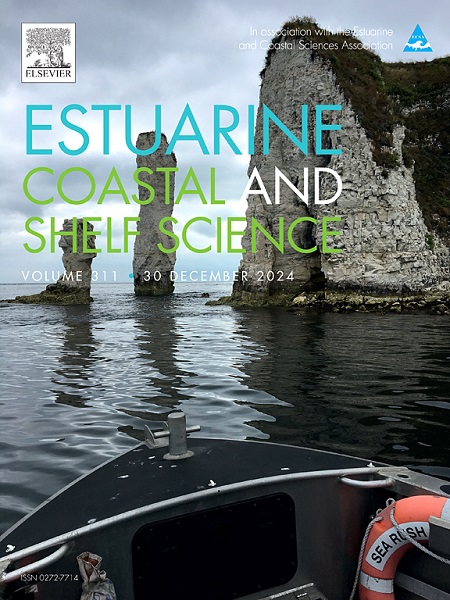Habitat use by juvenile fish in macroalgae and seagrass beds in a temperate South African seascape
IF 2.6
3区 地球科学
Q1 MARINE & FRESHWATER BIOLOGY
引用次数: 0
Abstract
Structurally complex habitats such as seagrass, mangroves and macroalgae are important as nurseries in estuaries and nearshore marine environments. While numerous studies have focussed on structurally complex vegetated habitats in estuaries, fewer studies have focussed on vegetated nursery habitats (particularly macroalgae) in nearshore areas and their importance. In this study, stereo remote underwater video systems (sRUV) were used to examine the nature of shallow water vegetated habitat (Zostera capensis and Plocamium corallorhiza) usage by juvenile fish in the Algoa Bay shallow water seascape (Swartkops Estuary and nearshore). The two macrophytes habitats are different in structural complexity, with P. corallorhiza having more structural complexity indices higher than Z. capensis. Plocamium corallorhiza had a higher juvenile total abundance, dominated by young-of-the year sparids. Although total juvenile abundance was lower in Z. capensis seagrass, the abundance of the estuarine-dependent sparid Rhabdosargus holubi (all young-of-the-year recruits) was higher in Z. capensis. Plocamium corallorhiza had a higher species richness compared to Z. capensis. Differences in species composition (abundance and richness) may be associated with high habitat heterogeneity in macroalgal sampling sites. Exhibited behaviours by juveniles in both habitats were dominated by slow meandering and feeding, behaviours associated with a high level of habitat use. In terms of fish community composition, both macrophyte habitats grouped broadly together but were statistically distinct from fish communities in unstructured sand.

求助全文
约1分钟内获得全文
求助全文
来源期刊
CiteScore
5.60
自引率
7.10%
发文量
374
审稿时长
9 months
期刊介绍:
Estuarine, Coastal and Shelf Science is an international multidisciplinary journal devoted to the analysis of saline water phenomena ranging from the outer edge of the continental shelf to the upper limits of the tidal zone. The journal provides a unique forum, unifying the multidisciplinary approaches to the study of the oceanography of estuaries, coastal zones, and continental shelf seas. It features original research papers, review papers and short communications treating such disciplines as zoology, botany, geology, sedimentology, physical oceanography.

 求助内容:
求助内容: 应助结果提醒方式:
应助结果提醒方式:


